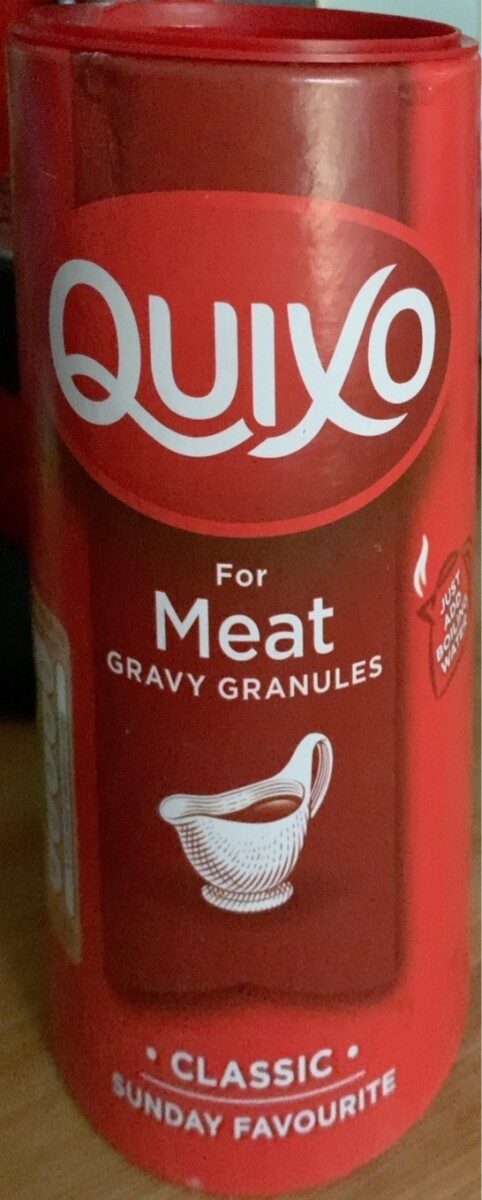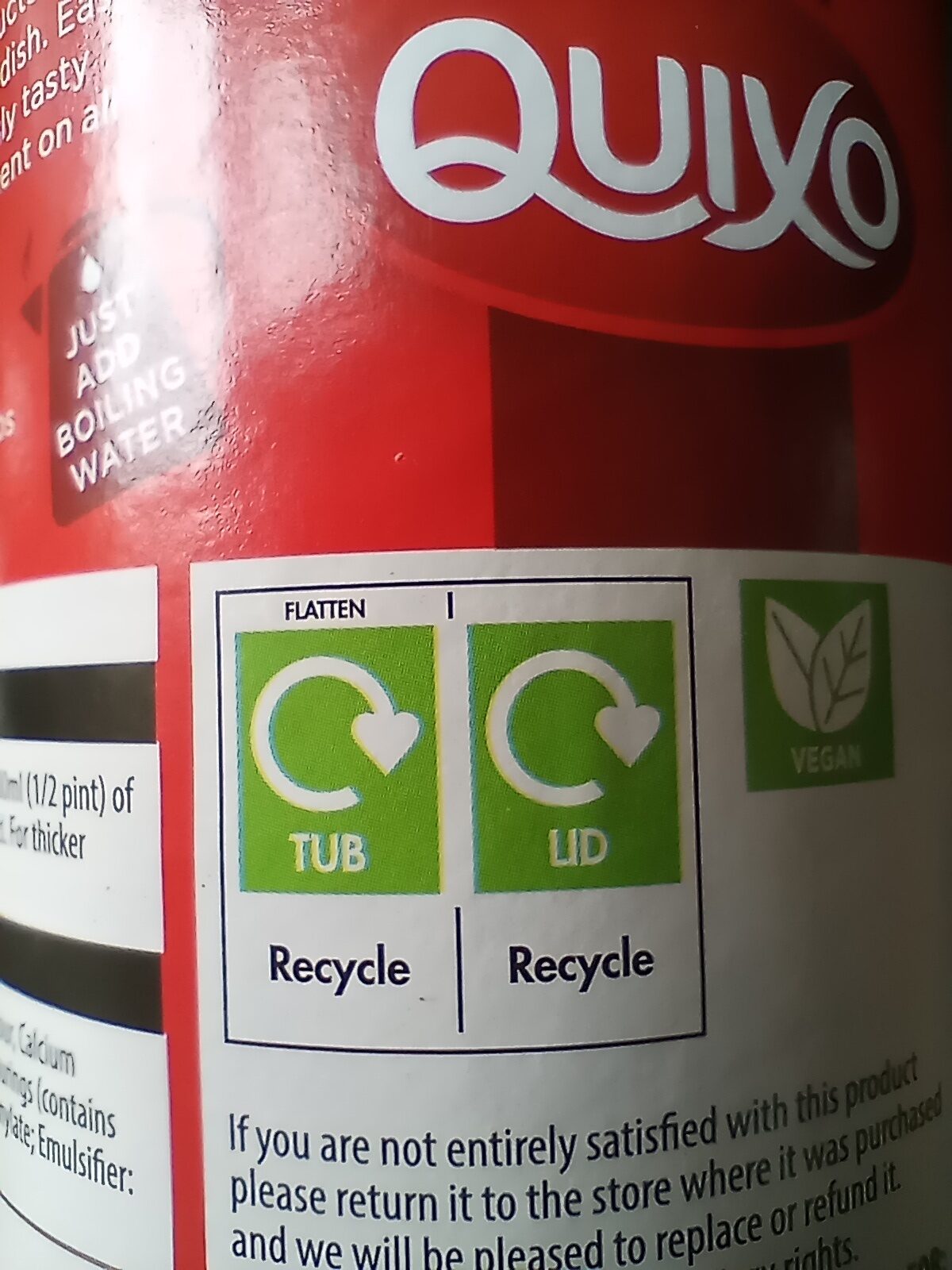Quixo gravy granules - Aldi - 50ml serving (as made up)
This product page is not complete. You can help to complete it by editing it and adding more data from the photos we have, or by taking more photos using the app for Android or iPhone/iPad. Thank you!
×
Barcode: 4088600227351 (EAN / EAN-13)
Quantity: 50ml serving (as made up)
Brands: Aldi
Categories: Condiments, Dried products, Dried products to be rehydrated, Sauces, Dehydrated sauces, Groceries
Labels, certifications, awards: Vegetarian, Vegan
Link to the product page on the official site of the producer: http://www.aldi.com
Stores: Aldi
Countries where sold: United Kingdom
Matching with your preferences
Report a problem
Data sources
Product added on by openfoodfacts-contributors
Last edit of product page on by inf.
Product page also edited by kiliweb, nicolalou, packbot, roboto-app, swipe-studio, teolemon, yuka.sY2b0xO6T85zoF3NwEKvlnR_AvyGkm3cMELfyEGB_cyAC5HFeP4s2qPQLag.










